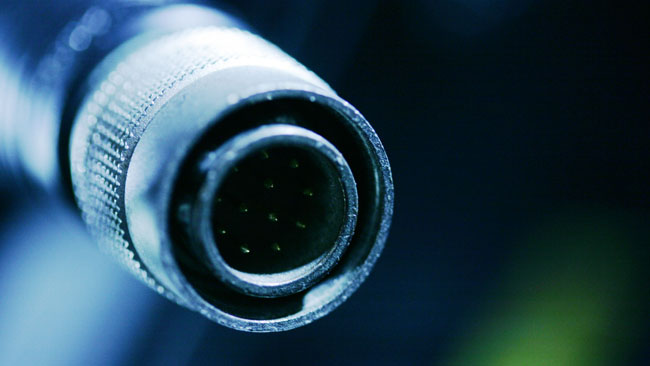
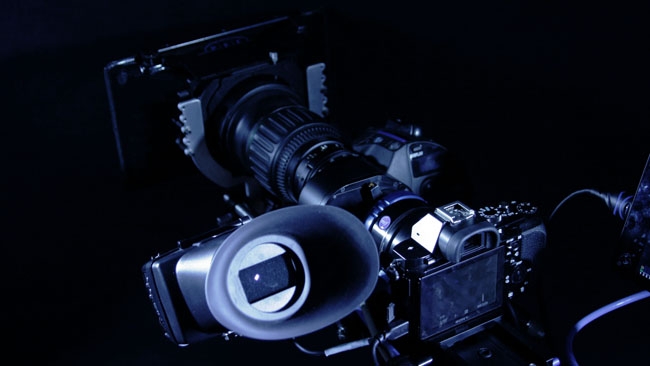 The A7s edition of Phil's evolving Frankencam
The A7s edition of Phil's evolving Frankencam
Phil Rhodes continues our series on kitting out your brand new DSLR so that it has the same functionality as your trusty old video camera. In part three, all about the glass.
Equipment – MTF B4 mount adaptor and Canon HJ11ex4.7B WRSD lens
One tricky issue with documentary and newsgathering cameras is that the lens is not only responsible for landing an image on the sensor, it's also a key part of the way the camera is handled. People have produced ENG-style grips for use with generic lenses, with Sony's FS7 grip being a design reminiscent of the glory days of 16mm documentary that works quite well, although it's hard to beat a real broadcast zoom lens. For the purposes of this article, I used a Canon zoom formally knowns as the HJ11ex4.7B WRSD, indicating an 11:1 zoom with 4.7mm wide end (which is very wide indeed), which currently goes for around £4500 used.
Actually getting a lens like this to land a usable image on a DSLR sensor is a process complicated by lots of choice. B4 lenses are designed to cover 2/3” sensors, which are actually about 8.5 by 6.4mm and are therefore much smaller than DSLR sensors. No dimension of a 2/3” sensor is actually two thirds of an inch; the nomenclature comes from the historical size of the tube in a tube camera which would yield the same imaging area as what we now call 2/3” chips (the same applies to micro-four-thirds sensors). As such the lens is not, by default, intended to project an image large enough to cover the entire sensor in either of the DSLRs we're considering.
There are several approaches which will allow us to make this sort of lens work on these cameras. First, we can take advantage of the extender feature of most broadcast zooms, which is designed to double the effective focal length (at the cost of some light) but has the incidental effect of enlarging the projected image. We can use a mount adaptor with enlarging optics, or we can tell the camera to window down its sensor, considering a smaller area of it instead of deriving the picture from the whole thing.
The extender feature of the lens will make the picture big enough to cover the GH4's sensor with a simple mount adaptor (although this is not a perfect solution; more below). MTF have both plain B4 to micro four-thirds adaptors which facilitate this approach, as well as a type intended for 16mm cameras with optical components that expand the image a little further. Even with the extender engaged, however, the lens will not cover the APS-C area of the A7S's sensor, so we must put the camera into APS-C mode and use both the extender and MTF's mount B4 to Sony E adaptor with enlarging optics.
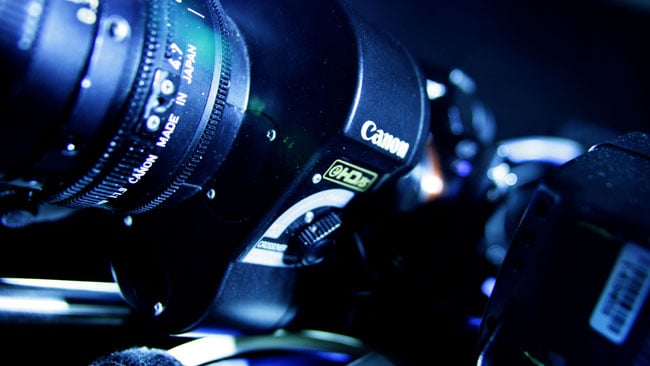
With regard to sensor windowing, the GH4 is certainly the most flexible option. Since half of four thirds is two thirds, the camera's ETC tele-conversion mode produces an active sensor area not hugely different from the 2/3” devices for which the lens was designed, and the lens is usable with or without its extender in much the same way it would be used on a native 2/3” camera. The GH4's 4K modes see a very slightly smaller area of the sensor than the HD modes, counterintuitively, which means the lens seems fractionally less wide in these 4K.
The MTF optical adaptor covers the 4K area nicely with the extender engaged (it's actually tantalisingly close to covering without the extender). Without ETC mode, which is not available in 4K, we gain the advantage of a larger sensor area with attendant improved imaging performance and shorter depth of field. This is really a rather flexible camera system, capable of shooting HD or 4K either large or small-sensor footage at the flick of a few switches. The only problem is a really large amount of glow and dispersion that becomes visible with the non-optical adaptor at any aperture wider than about halfway between f4 and f2.8 – this is a consequence of the lens being designed to land its images on the three sensors of a broadcast camera. The optical adaptors for both cameras are designed to correct for this but the system remains usable regardless – we simply avoid opening all the way up.
On either camera, assuming we avoid the GH4's ETC mode, what we actually see with the extender engaged is a broadly similar field of view to what we'd have seen with it disengaged on a 2/3” camera. The larger sensor catches the entire size-doubled image, for a maximally wide-angle view. For many people this is the attraction of this sort of working, for smoother handheld shots and more dramatic architecturals. What's lost is the long end, and people interested in shooting long-lensed beauty shots might choose to look around for a 22:1 zoom, so as to have more telephoto capability. On the shoulder, of course, the wideness is welcome and the MTF adaptors all pull off feats of impressive optical gymnastics in landing such a variable image on the sensor.
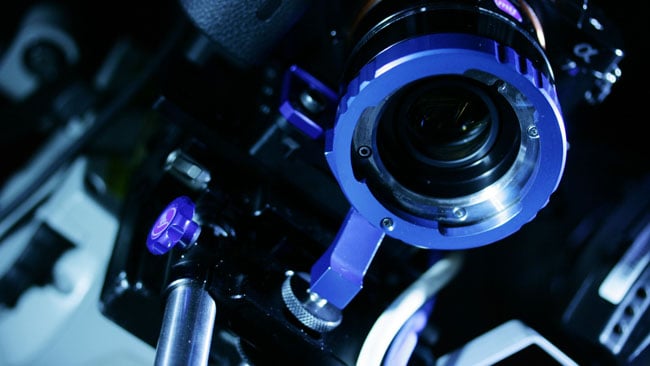
There are, of course, caveats with the general approach of putting B4 lenses on big-chip cameras. These lenses generally offer apertures down to f/1.3 or so. Given the task for which they were designed, and regardless of three-chip block issues, the low available f-stop might perhaps not represent a point of absolutely superb optical performance in the context of a 4K camera. We might choose to limit ourselves to f/4 anyway, treating the lowest stops as what they really are: an emergency option.
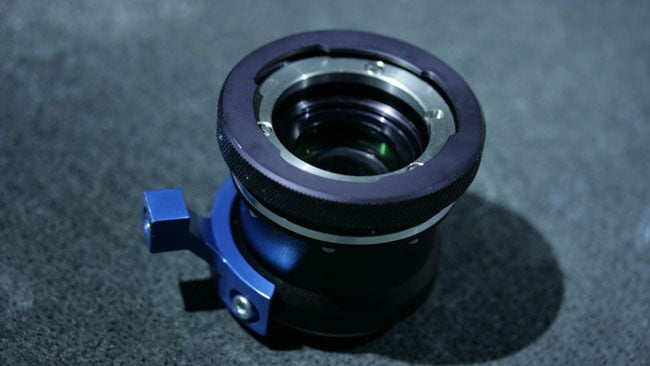
Given all this, the effective minimum f-stop for really good quality might be 5.6 or 8, with 4 showing on the aperture ring – which is about two stops slower than other options, for something that's a quarter the price, has double the zoom range, and which might be used on cameras which have usable sensitivities in the thousands anyway. That missing couple of stops hardly seems an insurmountable problem.
The only remaining issue is mechanical. MTF build these adaptors, by their own words, to fit tight, the better to maintain the tiny acceptable tolerances in flange focal distance. The advantage of B4 lenses in this regard is that they include back-focus adjustment, allowing quick and easy trimming-out of tiny errors when mounted to any camera, with or without an adaptor. Even if the forces introduced in normal operation would not risk any permanent damage, those back-focus tolerances are tiny and a poorly-supported lens might risk soft shots, so it's as well to make sure that things are properly clamped in place and appropriate lens supports are used.
With regard to electronics, making the servo zoom active requires nothing more than an appropriately wired 12-pin Hirose power cable. Enabling record-start from the REC button on the lens may be straightforward with cameras which accept a closing contact to start recording. It remains possible with cameras such as Sony's which sometimes accept digital LANC or infra-red remote control, though this would require active electronics. Such things might even make it possible to make the RET button active, to replay the last few seconds of the previous take, but it'd depend on the features electronically exposed by the camera.
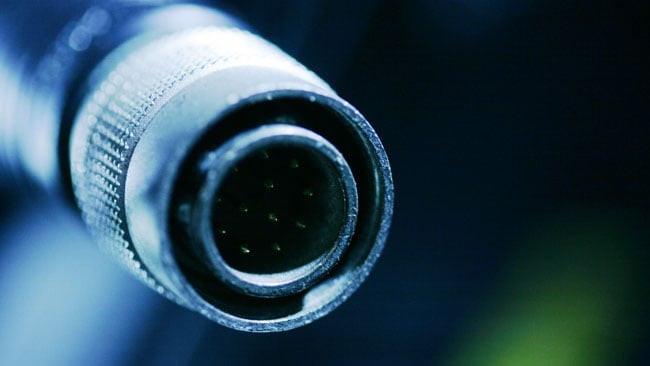
But the main attraction is operational. As we discussed with regard to the Tilta BS-T03 baseplate, this is starting to look like a nice option for someone who perhaps already owns B4 glass, or is willing to pay for a better experience when shooting documentary style. The real, manual, mechanically-interfaced focus is a boon for more formal dramatic work too. What's particularly nice about the way MTF has built its B4 to Sony E adaptor is that a combination of two separate devices provides compatibility with either Canon EOS or Sony E-mount cameras, which would include all the APS-sensor Canon DSLRs, the Canon Cinema range, EOS-mount Blackmagic Cinema and Pocket cameras (but not the 4K), the FS7, FS700, EA50 (strictly speaking, any NEX camera), and other cameras which cry out for more easily-handled lenses than those with which they are commonly used. It is a flexible, general-purpose option.
Read the other parts of this article below:
How to accessorise your new DSLR - Part One, the requirements
How to accessorise your new DSLR - Part Two, the Baseplate
How to accessorise your new DSLR - Part Four, putting it all together
I'm indebted to Ivailo Velinov at CVP for supplying the Canon HJ11ex4.7B lens, Tilta BS-T03 baseplate, Hawk-Woods battery mount, Alphatron EVF-035W viewfinder, and IDX battery system for use in this series. Thanks also go to Mike Tapa from MTF Services for the loan of adaptors to mount the B4 lens on Sony E, Canon EOS and Micro Four-Thirds cameras. Panasonic's GH4 and the Sony Alpha 7S camera came direct from the manufacturers, as did the Atomos Shogun 4K recorder.
Tags: Production


Comments